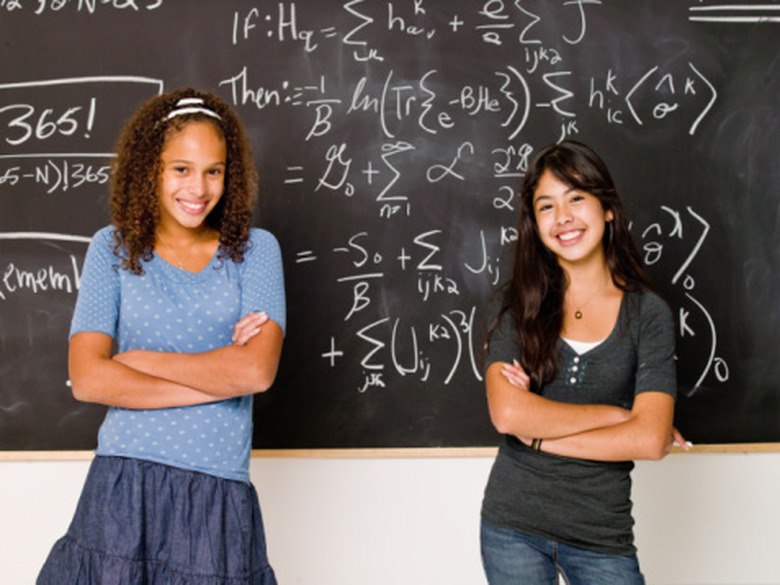Math Projects On Making Collages
Assigning a collage in a math class can be a welcome break from the norm of math problems and equations. A collage will allow students to put a creative and artistic spin on a math-class assignment and help them to learn and absorb the information in a new manner.
Percentages
Percentages
Choose a variety of coordinating themes and categories for the collage. For example, a prom-themed collage would have categories on dress styles, dress colors or dress lengths. Compile the collage by cutting and pasting pictures from your theme and categories. As you adhere the pictures together, keep a tally of how many pictures you are including from each category. Once complete, convert the tallies into fractions and percentages of the overall picture. If you have 100 pictures total — 25 of red dresses, 25 of black dress, 25 of green dresses and 25 of white dresses — include the percentage each dress color takes up. Or, adapt the numbers into a bar graph to represent the data reflected in the collage. Assign each aspect of the collage, such as the different-colored dresses, to a different-colored bar.
Math and Real Life
Math and Real Life
Create a collage that displays images of how math applies to real life. This could include photos of people shopping, paying bills, buying a house, working or even of a simple paycheck. Use your own life as inspiration for the collage by considering how math affects your daily life. Include a sales receipt for a coffee you purchased, photos of concert tickets or a picture of yourself in a work uniform, standing at a cash register. Combine the collage with a written reflection of how math impacts you and how you envision it playing a role in your entire life.
Numbers
Numbers
Combine the written form of numbers with physical manifestations of the numbers. Combine the written number "3" with three buttons glued onto the poster board. Draw the number 20 and fill it in with 20 beads or small seashells. The physical elements you use could follow a particular theme, or they could also be random and include a wide variety.
Geometry
Geometry
Assign the students a list of shapes, lines and angles. Instruct them to compile a collage of photos and images that display each of the geometry figures. These could include obtuse angles, a rhombus, rectangle, a pyramid or parallel lines. The students can use images from newspaper and magazines or they can take the photographs themselves. Instruct the students to number each image on the collage to the coordinating element on their list, which will enable easy checking for shapes.
Cite This Article
MLA
Barry, Michelle. "Math Projects On Making Collages" sciencing.com, https://www.sciencing.com/math-projects-making-collages-7942605/. 24 April 2017.
APA
Barry, Michelle. (2017, April 24). Math Projects On Making Collages. sciencing.com. Retrieved from https://www.sciencing.com/math-projects-making-collages-7942605/
Chicago
Barry, Michelle. Math Projects On Making Collages last modified August 30, 2022. https://www.sciencing.com/math-projects-making-collages-7942605/
